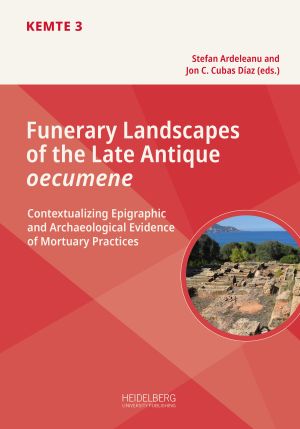Zitationsvorschlag
Lizenz (Kapitel)

Dieses Werk steht unter der Lizenz Creative Commons Namensnennung - Weitergabe unter gleichen Bedingungen 4.0 International.
Identifier (Buch)
Veröffentlicht
Transformation und Verschwinden
Inschriften in der Funerärkultur an Oberrhein und südlichem Mittelrhein in Spätantike und Frühmittelalter
Abstract Epigraphic and funerary culture along the Upper Rhine Valley underwent many changes in Late Antiquity and the early Middle Ages. While several hundred funerary inscriptions from the 1st to 3rd c. AD are known to us, the amount of newly erected epitaphs sank rapidly during the 4th c. AD, all but disappearing from the cities and the countryside. Even from larger cities, almost no funerary inscriptions are known, while at the same time, the area features many richly furnished burials. During this time, a large amount of inscribed funerary monuments disappeared from public view, being used to build the Late Antique city walls of numerous cities in the Rhine Valley.
On the other hand, apart from this abrupt end of the epitaphic habit, some areas show signs of continuity, especially when taking the area along the Middle Rhine into consideration. This continuity went along with a transformation of the epitaphs’ external and internal form. The content of the inscriptions and the letter forms changed, and so did the monuments, along with the way they were positioned. A closer inspection of the so far largely neglected lateral sides of the epitaphs offers new information about their positioning, possibly in so far unknown burial buildings, as well as on the re-use of earlier funerary monuments. Some decorative aspects of the later epitaphs might even consciously emulate earlier forms from the same places.
The aim of this paper is to trace the local developments of the epitaphic culture during Late Antiquity, contrasting the relatively inscription-rich area to the north with the almost empty south. A possible explanation for the scarce evidence in the south, other than a general decline of epigraphic culture, might be found in a low activity of Christian communities and the nearly total absence of burial in collectively used funerary buildings, which offered an attractive context for epigraphic communication in other areas.
Keywords Epitaphic Culture, Late Antiquity, Funerary Inscriptions, Germania, Upper Rhine Valley






